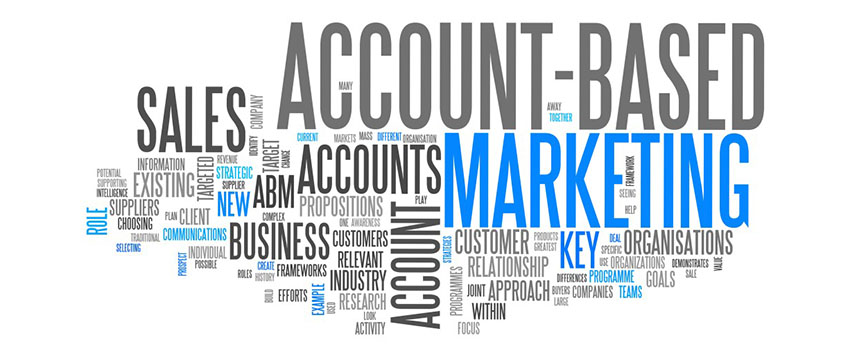
Account-based marketing (ABM) is having its moment in the spotlight. 92% of B2B marketers say it's "extremely" or "very" important to their strategies. And almost as many - 84% - believe it delivers stronger ROI than other approaches.
But if marketers are so sold on ABM, which aims to accelerate revenue and deepen customer relationships by personalizing marketing and sales, why are their ABM strategies failing? The answer is simple: ABM is difficult.
ABM Then and Now
Although many business leaders are still learning the ropes of ABM, believe it or not, the approach has been around for more than a decade. It originated in 2004 when the Information Technology Services Marketing Association (ITSMA) began working with companies to initiate ABM programs.
But while ABM continues to grow by leaps and bounds, its core tactics haven't changed much. The main difference between ABM in 2004 and today is the technology available to support it. Ever-more sophisticated marketing automation and inbound marketing software makes coordinating customer data a snap. These platforms, however, are only useful when paired with business intelligence solutions.
In other words, ABM is not about "spraying and praying." It begins with business intelligence to understand your total addressable market. Then, it's about pinpointing ideal customers within that market and, finally, aligning sales and marketing efforts to effectively reach them.
That's a lot of moving pieces, and whether you like it or not, they all hinge on one thing: comprehensive, accurate data.
ABM Gone Wrong
Following customer data to increase deal sizes, boost win rates, and shorten sales cycles is what ABM is all about. No wonder nine out of 10 marketers are in favor, right?
To launch your ABM strategy past the learning curve and into quantifiable success, avoid these three mistakes:
1. Garbage in, garbage out
No good decision is ever made on bad information, and according to IBM, a remarkable one-third of U.S. business leaders don't trust their own data. To succeed, your ABM efforts must rest on a foundation of clean - and fairly granular - data about your target customers.
"One of the biggest marketing culprits for using bad data is account-based marketing," Anne Gherini, VP of marketing at Node, shared in a recent Inc. article. "It makes sense that spending money on targeting the right leads would be most efficient, unless your definition of 'right' is, in fact, wrong."
First, determine whether your data is more fiction than fact. Commission a third-party customer analysis to check. If the results are different from what your own data is telling you, that's a red flag. Select a single source of true, comprehensive customer data before moving forward.
2. Staying in the shallow end
nfortunately, data can be accurate without being complete. Incomplete data leads to partial customer profiles, making it impossible to know exactly where opportunities lie and, more importantly, how to access them.
"Let's assume that you're going to get really, really good data, but if you're still not good on messaging and don't really appeal to the emotional aspects of how people make their purchases, I think it's going to be really, really hard," Sangram Vajre, co-founder and CMO of Terminus, said at the roundtable discussion.
To personalize your approach, build an ideal customer profile for each target segment. Run your clean data through an analysis tool such as Node. Add business attributes such as the number of employees, revenue, prominent investors, and budget to company profiles. Then, for each company contact, layer in demographic information - gender, location, income, age, and more - and psychographic data - personality type, political ideology, and online behavior. Surveys, online forums, and social media can help fill gaps in your data.
3. Creating a culture of confusion
Even with unsullied data and deep customer profiles, your ABM strategy still can't succeed without true alignment between sales and marketing. That requires more than "nod their heads" buy-in; you need a full-fledged culture shift.
"The cultural differences [between sales and marketing] cannot be overstated," Matt Heinz, president of Heinz Marketing, shared at the roundtable. "First, we need to get marketing and sales teams on the same page in terms of what's important. We need sales to actually coordinate efforts with the marketing team. We need marketing to fully embrace revenue responsibility. Those are big shifts."
Outline exactly how the two functions will work together. Start with a service-level agreement to describe how marketing will nurture sales leads before passing the torch. Then, share how salespeople should provide feedback during and after the sale.
Founders play a critical role here. While execution is up to sales and marketing, founders establish KPIs and guide cultural transition. Culture-building might be tough, but it's worth it. Blended marketing and sales teams averaged 32 percent annual revenue growth compared to the prior year compared to a seven percent decline for non-aligned organizations.
There's a reason why so many companies are turning to ABM to meet their growth goals. But ABM takes more than flashy technology and hordes of information. It's a strategy, and to successfully execute it, you need hygienic data, thorough personalization, and deep cultural alignment. Get those things right, and your brand could be headed for its moment in the spotlight as well.
By Falon Fatemi
Article from Forbes






